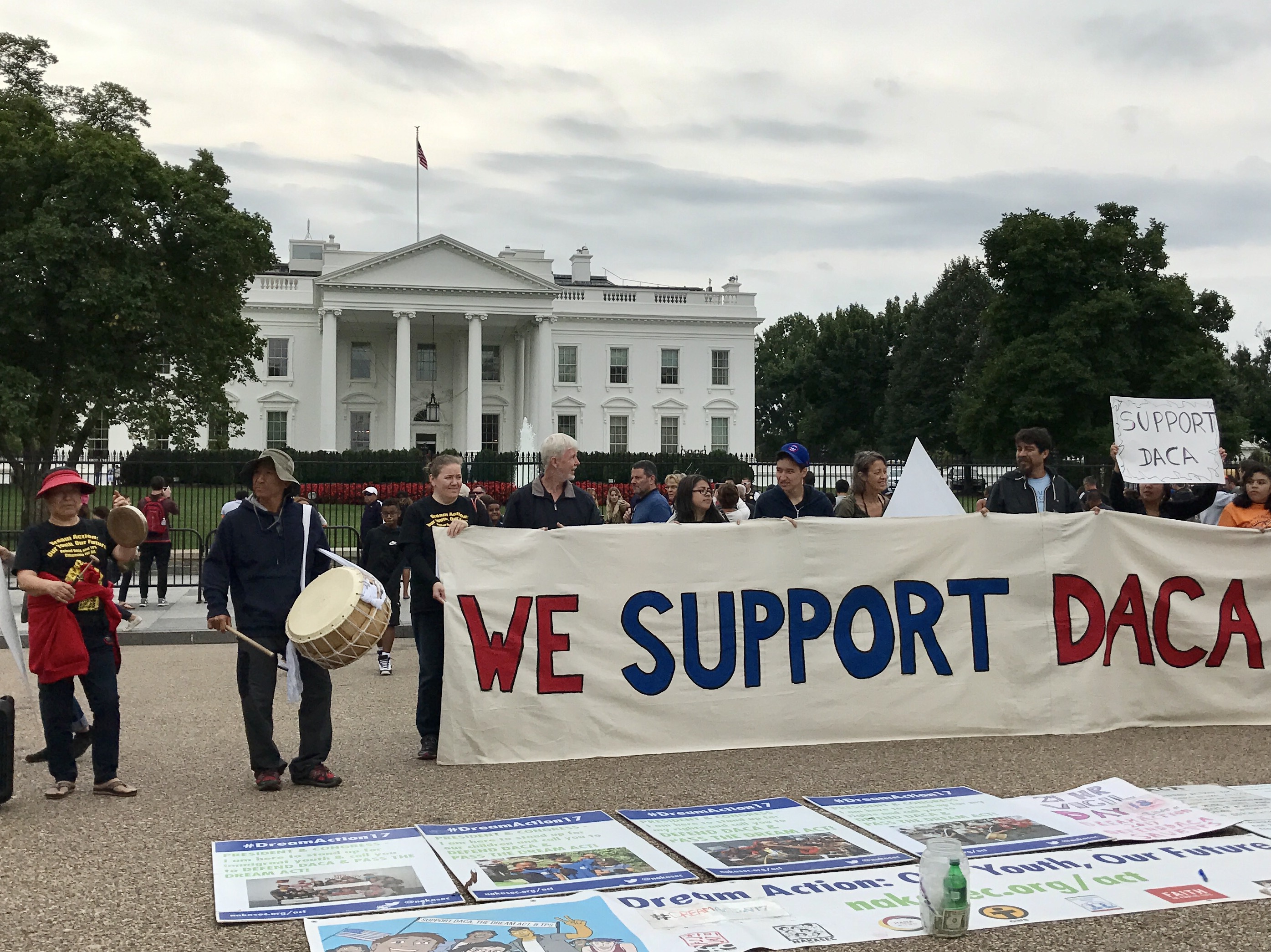A Native Perspective on the National Immigration Debate
#DACA, Jobs, #DREAMERS and BordersBy Mark Charles
wirelesshogan.com Today is the day we are supposed to learn the fate of DACA (Deferred Action for Childhood Arrivals). President Trump campaigned on the promise that he would end DACA, and September 1 is the deadline handpicked by several Republican state attorneys general threatening legal and legislative action against the controversial immigration policy. DACA was created by President Obama in 2012 and has protected around 800,000 DREAMERS (young undocumented people brought into the country as children who have since assimilated to American culture, been educated in the US, and exhibited patterns of model and productive behavior). I expect that, throughout the day and the week, there will be many politicians, activists, commentators, and "experts", all talking, writing and tweeting about immigration, #DACA, protecting our borders, #DREAMERS, and preserving American jobs. But I am willing to bet, at least on national media, that not one of them will address the point I am about to make. I do not want to make light of this national debate. Immigration and refugees are important topics that need to be discussed. However, I feel that, as a nation, we often put the cart before the horse. And, we generally do not know, nor have we dealt with, our history. As a result, at times, our passionate argumentation borders on the absurd. Please allow me to demonstrate. I know this is not pleasant, but I would like to ask you to ponder a carjacking for a few minutes. Suppose a family was driving along in their car and two people stopped them at gun point. The car was full, with five family members. In the chaos of the carjacking two of the family members, the parents, were shot and killed. One person, the oldest child, was wounded and thrown out of the car, left for dead alongside the road. And the remaining two, the youngest children, were gagged, tied up, and thrown in the back seat. The two who drove off with the car laughed about what they had done. The first jumped in the driver’s seat and the second rode shotgun. They drove off down the street. After a few miles, they saw some friends and stopped to pick them up. There were two of them, so the driver took the children, who were in the back seat, and shoved them into the trunk. He then asked the two new passengers to sit in the back seat. As they drove on, they saw two more friends walking along the road. They pulled up beside them at a stop sign and, because it had started to rain, they both jumped in the back seat without even asking. Now the car was full. And, with four people in the back seat, there were not enough seat belts for everyone. As they drove, the driver of the car was afraid of getting pulled over for having too many people in the back seat. He warned the passengers that one of them would need to get out at the next stop sign. An argument immediately ensued as to who should get out. There was a general feeling among the two in the front and the two friends they picked up first, that at least one of the two who jumped in without asking permission should leave. And perhaps even both of them. They argued back and forth about who should leave. Moral stances were taken. Justifications were given. Reason, logic, and threats of violence were used. But no consensus was found. Eventually they arrived at the next stop sign. It was decision time. Something had to happen. Someone had to get out. The car sat at the stop sign for quite some time as the six of them argued. The driver made the argument that everyone had to have a seat belt and he was not going to drive any further until at least 1 person got out. He didn't care which one. The passenger riding shotgun argued that the oldest of the two newest passengers who jumped in the car without asking should get out. One of the two friends who got picked up first, argued that both of the two who jumped in without asking should get out. He was tall, and wanted more space to stretch his legs. And the second of the two friends who got picked up first, argued that the younger of the final two that jumped in without asking should be the one to get out. And the last two, the ones who jumped in without asking, both argued that everyone should be allowed to stay. So, who is right? What is just? Who, if anyone, should get out? Immigration (and refugees) are important topics that need to be discussed. But because of our nation's history, and who is making the arguments, does not the entire conversation border on the absurd? You tell me. And don't forget about the family that was murdered. The car that was stolen. And the kids still bound, gagged and locked in the trunk. Mark Charles (Navajo) serves as the Washington, D.C., correspondent for Native News Online and is the author of the popular blog “Reflections from the Hogan.” His writings are regularly published by Native News Online in a column titled “A Native Perspective” which addresses news directly affecting Indian Country as well as offering a Native perspective on national and global news stories. Mark is active on Facebook, Twitter, YouTube and Instagram under the username: wirelesshogan
Join the Conversation

